Spanish art, with its rich and captivating history spanning over a millennium, continues to captivate us with its profound contributions to the European art scene. From the grandeur of Neoclassical works to the groundbreaking innovations of Cubism, famous Spanish artists, and painters have consistently pushed the boundaries of artistic expression throughout the centuries. Their works showcase a deep passion and unwavering commitment to various art movements, resulting in a diverse and vibrant artistic landscape.
Spanish artists have drawn inspiration from a multitude of sources, incorporating elements from Gothic and Biblical architecture to Renaissance landscapes. The Spanish Golden Age stands as a testament to the extraordinary artistic achievements of this period. While some Spanish art styles bear traces of influence from Italian and French art forms, they have cultivated their distinct characteristics, making significant contributions to the international art scene. In this article, we will explore the lives of 11 of the most famous Spanish artists and painters.
Pablo Picasso
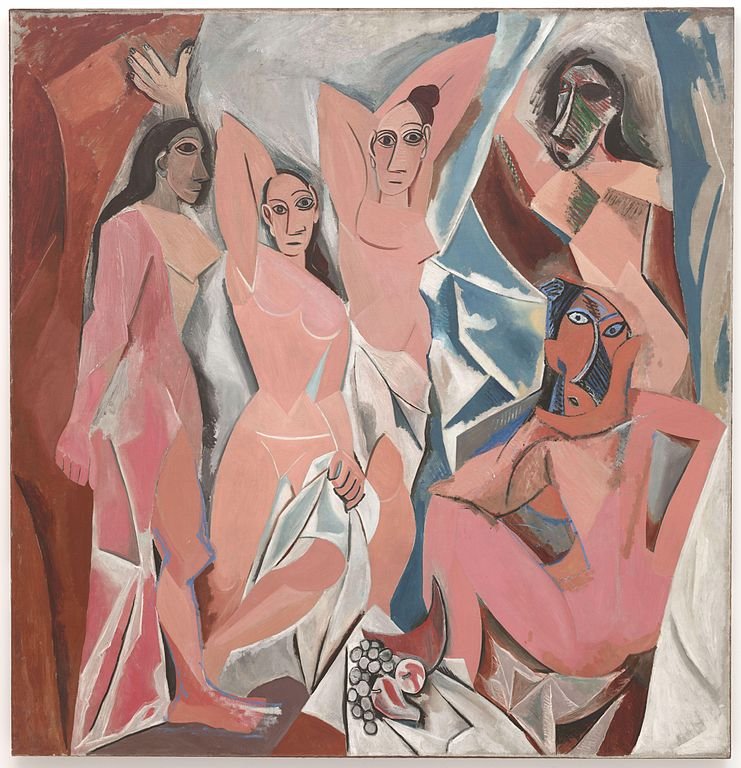
Pablo Picasso was one of the most iconic figures in the 20th-century art world, showcasing exceptional expertise across diverse artistic domains, ranging from painting and sculpting to ceramic pottery. Born in the city of Málaga in southern Spain, Picasso played a pivotal role in co-founding revolutionary art movements like Cubism, forever altering the course of artistic expression.
The vibrant atmosphere of France, where Picasso spent a significant portion of his adult life, nurtured his artistic genius to full bloom. Amidst the turbulence of the Second World War, Picasso quietly lent his support to the resistance movement, channeling his art as a subtle yet powerful form of protest against the prevailing forces.
Throughout his artistic journey, Picasso traversed distinct periods that showcase his evolution as an artist. The introspective Blue Period (1901-1904) revealed a series of poignant paintings imbued with a melancholic tone, while the subsequent Rose Period (1904-1906) introduced an explosion of vibrant colors, dominated by delicate shades of rose. In the later years of his life, Picasso delved into the realm of humanitarian art, employing his creative prowess to advocate passionately for peace.
During his Blue Period, subjects like beggars and prostitutes became prominent in Picasso’s paintings, reflecting his exploration of society’s marginalized figures. His mid-1900s breakthrough as an artistic sensation stemmed from his powerful depictions, using analytical painting techniques to delve into the critical elements of life. This profound ability to capture the essence of existence garnered worldwide attention and cemented Picasso’s enduring legacy.
Picasso’s artistic legacy continues to inspire generations of artists and art enthusiasts, as his transformative contributions to modern art continue to resonate with their boldness, innovation, and profound exploration of the human condition.
Salvador Dali
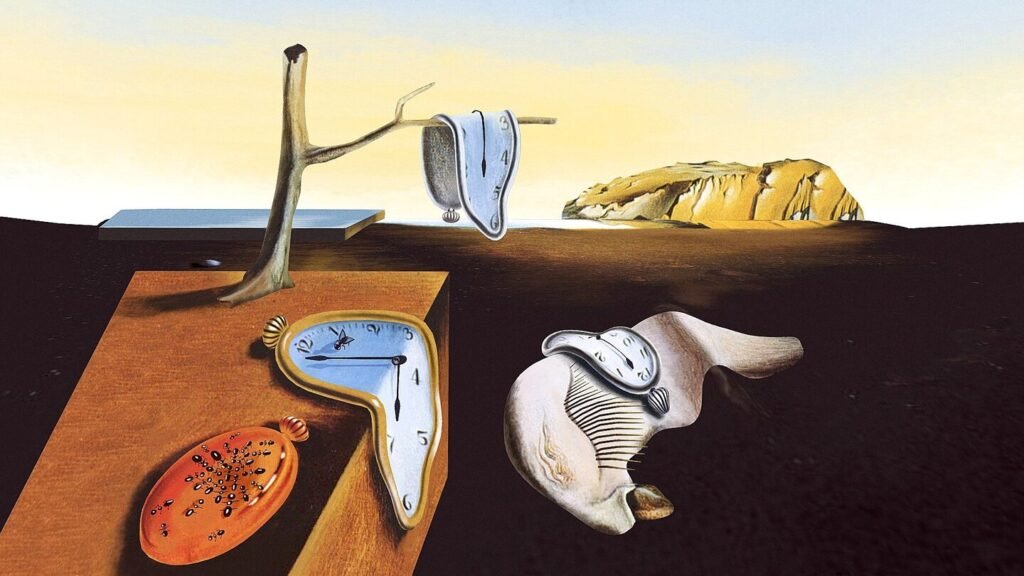
Salvador Dali was a Spanish surrealist artist, renowned for his impeccable technical skill, precise draftsmanship, and striking and unconventional imagery in his artwork. It was in 1916 that his parents first recognized his exceptional talent and enrolled him in a drawing school, setting the stage for his artistic journey.
From a young age, he was influenced by Impressionism and the Renaissance masters In 1919, at a remarkably young age, Dali held his inaugural exhibition, organized by his father. This early showcase served as a stepping stone for his burgeoning career, allowing him to display his artistic vision to the world. Continuing his artistic education, Dali commenced studies at the Art Institute in Madrid in 1922, where he became increasingly drawn to Cubism and avant-garde movements.
In the late 1920s, Dalí’s artistic journey led him closer to Surrealism, ultimately leading to his joining the Surrealist group in 1929, where he soon emerged as one of its leading figures. Salvador Dalí’s iconic masterpiece, “The Persistence of Memory,” stands as one of the most renowned and recognizable works of modern art in history.
Dalí had a unique ability to manifest unconscious and unimaginable ideas, weaving them into his artworks in an elusive and enigmatic manner. His paintings often featured animals and food items as focal points, presenting viewers with surreal and thought-provoking compositions. Salvador Dalí’s influence on modern artists is undeniable, inspiring them to break free from repetitive and traditional styles and explore the realms of uniqueness and innovation.
Francisco Goya

Francisco Goya, a remarkable artist of the 18th century, remains a significant figure known for his contributions to Romanticism in painting. His works exude an unparalleled level of expressiveness, offering a glimpse into the artist’s emotional journey through his sequence of paintings.
During his early years, Goya led a relatively ordinary life, serving as a court painter to the Spanish Royal Family. His artistic prowess shone through his numerous paintings created for the Spanish crown, infused with the essence of romanticism. Notably, masterpieces such as “The Parasol” capture the subtleties of romanticism in their scenes, showcasing Goya’s exceptional skills.
Goya’s attention to detail and clarity is evident in his depictions of the royal family, demonstrating his expertise in capturing their essence. However, as life took its toll, Goya experienced challenging circumstances that left him vulnerable. In 1793, he tragically lost his hearing due to a severe illness, which marked a turning point in his artistic expression, infusing his works with a sense of pessimism.
Subsequently, the outbreak of the Peninsular War while Goya was in Madrid further influenced his art. The artwork created during this wartime period served as a reflection of his troubled state of mind. Goya bore witness to numerous horrific scenes, which he fearlessly depicted on canvas, culminating in powerful works like “The Third of May 1808.”
Joaquin Sorolla
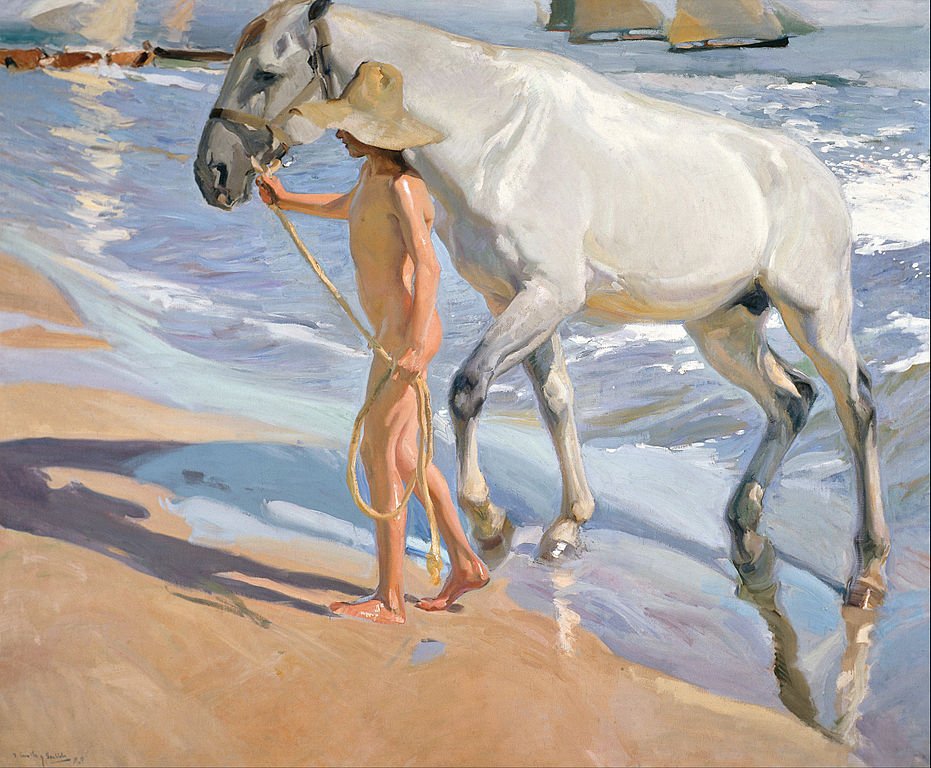
Joaquin Sorolla, a Spanish painter associated with Impressionism, was born in 1863 on the coastal shores of Valencia, Spain. His affinity for capturing the beauty of water and beach scenes became a distinguishing characteristic of his art. Sorolla’s ability to infuse his works with vibrant and evocative light, coupled with his exceptional craftsmanship, cemented his place as a celebrated artist.
While Sorolla excelled in depicting maritime settings, he was also highly skilled in landscape and portraiture painting. His journey as an artist began at the age of 15, and by 18, he had relocated to Madrid. There, he immersed himself in the art world, studying and meticulously copying Old Master Paintings at the renowned Prado Museum. Subsequently, he ventured to Rome, where he honed his ability to capture the effects of light, a defining element in his work.
Upon his return to Madrid, Sorolla had already achieved significant fame and recognition. In 1911, he was selected by the Hispanic Society of America to create decorative pieces for its prestigious library in New York City. His artistic prowess continued to garner attention, and in 1933, J. Paul Getty acquired several of Sorolla’s paintings at an auction, captivated by their remarkable quality and the artist’s unique treatment of light.
Joan Miro

Joan Miró, born in Barcelona, Spain, was immersed in the world of art from a young age, observing his watchmaker father’s craftsmanship. While initially pursuing business studies, Miró’s passion for art rekindled, leading him to enroll in the School of Art in Barcelona from 1912 to 1915.
During the early stages of his career, Miró predominantly painted genre scenes, still lifes, and landscapes. However, his artistic journey took a transformative turn when he relocated to Paris in 1921. Inspired by the vibrant contemporary art movements of the time, including Surrealism, Fauvism, and Cubism, Miró’s style evolved, reflecting a fusion of these influences.
Renowned as one of Spain’s most influential painters, Miró’s artistic language embraced geometric shapes, biomorphic forms, and semi-abstracted objects. His creative expression extended beyond traditional painting to encompass engravings, installations, and ceramics, each medium embodying his unique artistic vision. Throughout his prolific career, Miró continued to produce thought-provoking works until his passing in 1983.
Diego Velazquez

Diego Velázquez, a Spanish painter born in Seville, Spain, in 1599, dedicated his entire life to his art until his passing in 1660. His artistic journey began at the tender age of 11 under the tutelage of Francisco Pacheco, a prominent local Spanish artist. By 1617, Velázquez had completed his apprenticeship, marking the start of his independent career as a painter.
In his quest for artistic growth, Velázquez traveled to Italy between 1629 and 1631, where he immersed himself in the techniques of Italian painters. Upon his return to Spain, he became renowned for his skill in capturing the likeness of the royal court, producing a series of remarkable portraits.
In 1649, Velázquez once again journeyed to Italy, where he had the opportunity to paint the portrait of Pope Innocent X. Among his most celebrated and enigmatic works is “La Venus del Espejo” (The Rokeby Venus), an iconic masterpiece. Another notable creation is “The Spinners,” completed in 1657, serving as one of his final works.
Jusepe De Ribera

Jusepe de Ribera, an eminent artist of the Baroque period, stands as one of its earliest pioneers. Renowned for his fascination with capturing the essence of martyrdom in his artworks, Ribera possessed a masterful ability to convey profound emotions of pain, agony, and suffering. Greek mythology served as a frequent inspiration for Ribera, as he often depicted biblical figures infused with the spirit of ancient Greece.
Influenced by luminaries such as Caravaggio, he skillfully employed contrast in his paintings, juxtaposing vibrant hues for central subjects against dark, atmospheric backgrounds. This technique is evident in notable works like “Apollo and Marsyas.”
In addition to his independent creations, Ribera was sought after for commissioned pieces, creating awe-inspiring art for churches and convents throughout Spain and Italy. With a prolific output, Ribera’s artistic legacy comprises over 100 paintings, a testament to his enduring influence and a source of inspiration for generations to come.
El Greco
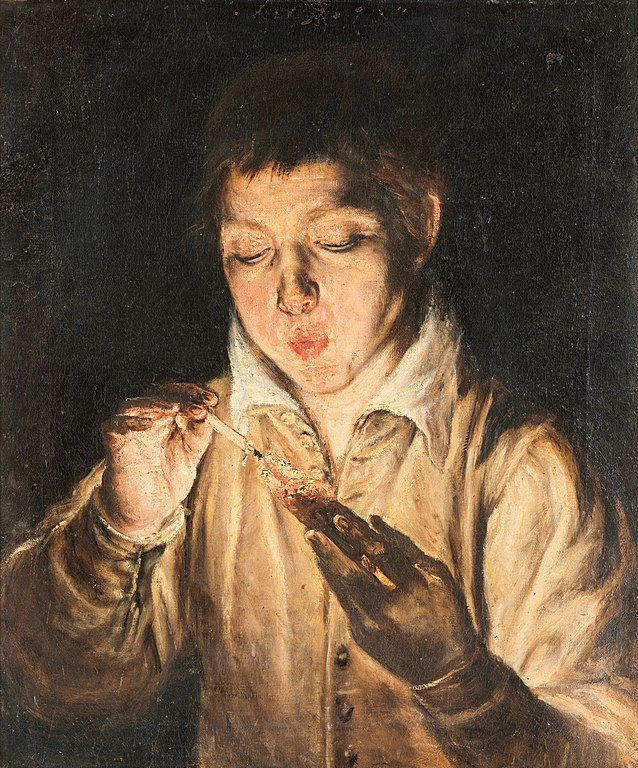
El Greco, born on the Greek island of Crete, is widely recognized as one of the most influential Spanish artists in history. In 1567, he made the significant move to Venice, Italy, where he honed his skills as an established painter of icons. Immersed in the vibrant artistic scene, El Greco embraced the Venetian Renaissance style, drawing inspiration from renowned artists such as Jacopo Bassano, Titian, and Tintoretto, which contributed to his evolution as an Italianate painter.
In 1570, El Greco journeyed to Rome, where he found himself welcomed into the household of Cardinal Alessandro Farese. Over the course of six years, he captured the portraits of various men who frequented the Farnese Palace, showcasing his remarkable talent. However, in 1572, he faced expulsion from the Cardinal’s household, prompting him to remain in Italy until 1576. Subsequently, he made his way to Madrid before ultimately settling in Toledo, where he spent the remainder of his life until his passing in 1614.
Antonio Gisbert
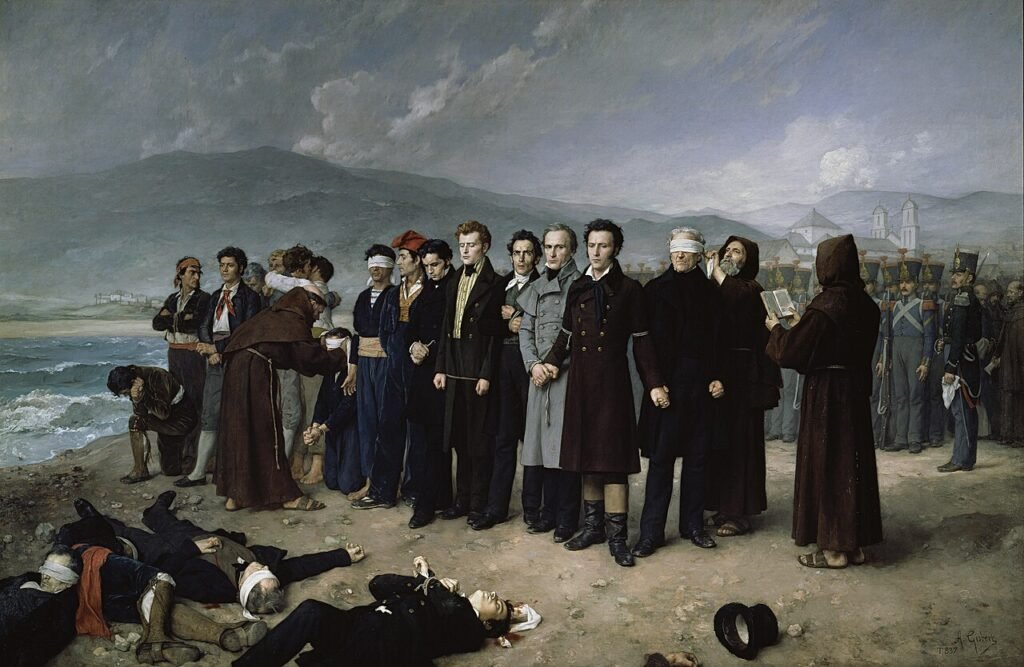
Antonio Gisbert, a prominent figure among renowned Spanish artists, achieved mastery in capturing the essence of eclecticism on canvas. His artistic repertoire encompassed major political events of the 19th century. Drawing inspiration from the chiaroscuro technique of the Baroque period, Gisbert skillfully employed contrast to emphasize his subjects. With a distinct focus on realism, he aimed to give voice to the suppressed and shed light on pressing political issues.
Gisbert’s art often aligned with liberal causes, reflecting his strong opposition to totalitarianism. Notably, he painted several portraits of King Amadeo, an Italian prince who ruled over Spain from 1870 to 1873. Through his brush, Gisbert sought to convey the intricate nuances of these figures, capturing their essence with remarkable realism.
One of Gisbert’s most renowned works, “The Execution of Torrijos and His Companions at Malaga Beach,” epitomizes his ability to depict historical events with striking realism. This painting stands as a testament to Gisbert’s success as an artist within the realm of Spanish Eclecticism.
Juan Gris

Juan Gris, a prominent figure in the Cubist movement, propelled the art form to new heights with his innovative approach. Not only did he demonstrate his expertise in analytical cubism, but he also seamlessly merged it with elements of modern art.
Gris embarked on his artistic journey as a satirical cartoonist before dedicating himself fully to painting in 1911. From that point on, his impact on the art world was profound. One of his distinguishing talents was his ability to employ grid structures, simultaneously embracing both continuity and discontinuity. In works like “Juan Legua,” he portrayed a non-symmetrical grid structure, while paintings like “The Guitar” showcased a symmetrical discontinuity.
Francisco De Zurbaran
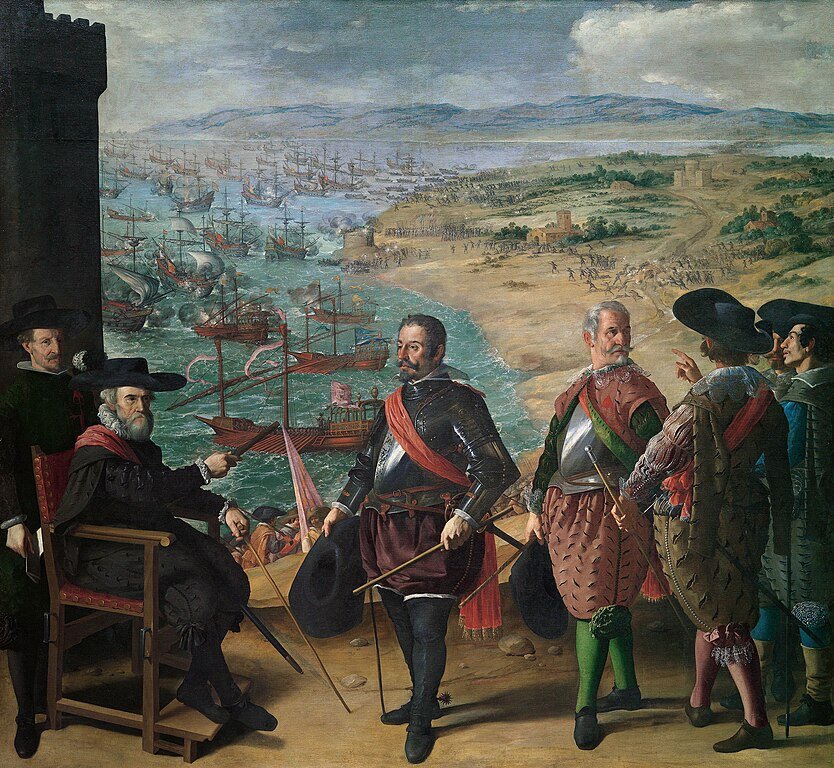
Renowned for his mastery of the chiaroscuro technique, Francisco de Zurbaran created biblical masterpieces with unparalleled skill. While some historians speculate on Zurbarán’s potential influence by Caravaggio, there is no conclusive written evidence to support this claim.
Nevertheless, certain paintings by Zurbaran do exhibit a similar style of tenebrism found in Caravaggio’s works, leading to his reputation as the “Spanish Caravaggio.” Zurbaran’s artistic journey began in 1614 when he was sent to Seville by his father. It was during this time that he became acquainted with Pedro Diaz de Villanueva, marking the start of his artistic career.
In 1626, Zurbaran entered into a contract with a Dominican Monastery in Seville. The agreement entailed producing 21 paintings within a span of 8-9 months, all centered around the life of Saint Dominic. This milestone proved to be a breakthrough for Zurbaran, paving the way for him to continue creating masterpieces in the years to come.
